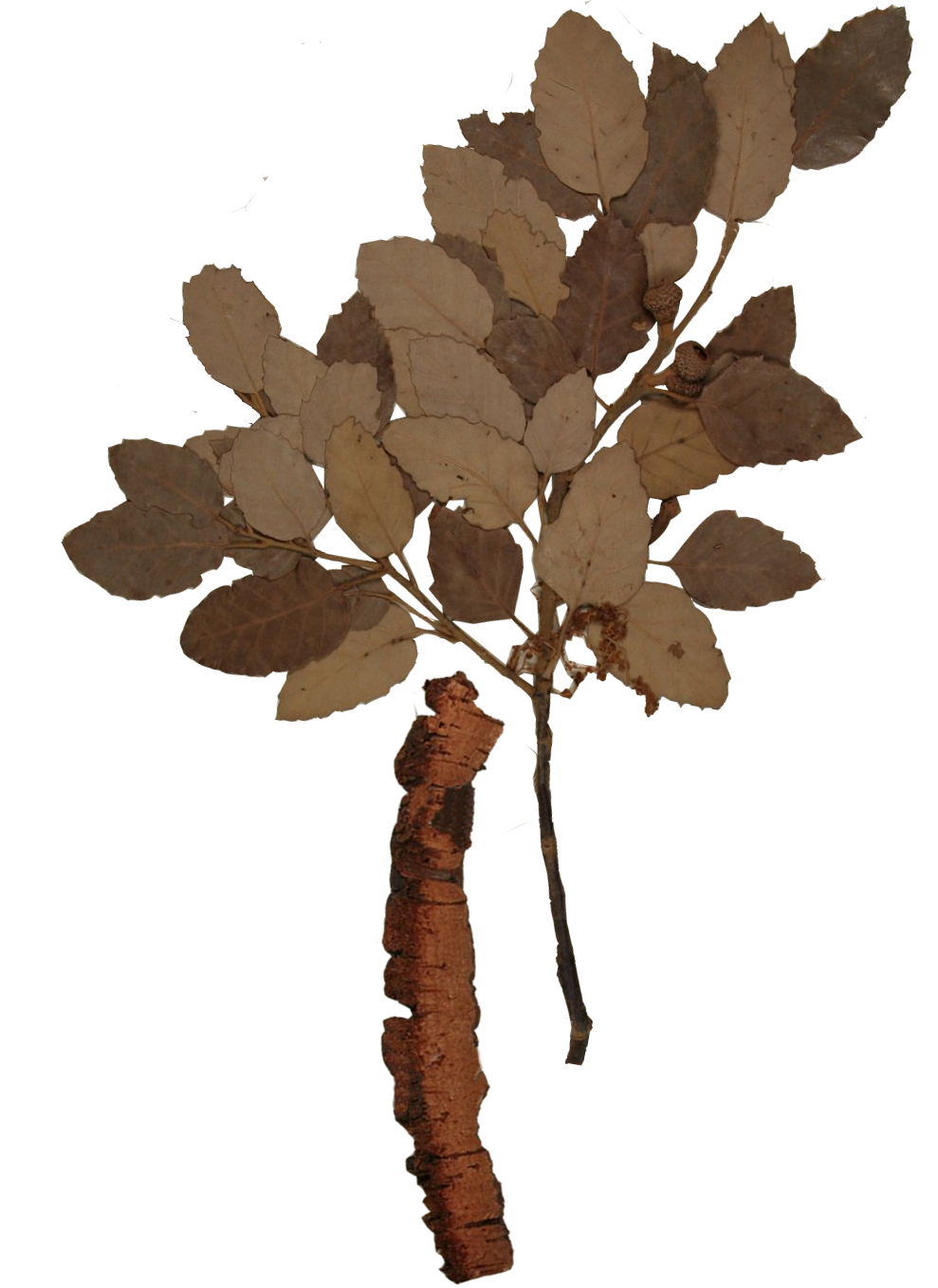Cork
Cork
[Quercus suber] Also calles the cork oak
Family
Fagaceae
Height
Average height from 10-15 meters
Location and climate
Southern Europe and North Africa.
Pollination
Wind
The bark from the cork tree can be harvested when the trunk diameter is aprox. 70 cm and the harvest can take place every eight years. Cork harvesting is done entirely by hand.
Cork bark contains thin walls filled with air, cellulose, suberin and tannin.
A cork tree can live more than 200 years in good conditions and can provide one hectare of cork in its lifespan.
Cork forests are valuable for the biodiversity as the forests home many different animal and plant species. The cork oak also receives nutrients from fungus and the root system of the cork tree is part of a symbiosis with several fungus.
Many old cork forests are being replaced with Eucalyptus trees due to the high demand on both paper, packaging material and Tencel fiber. This causes depletion and erosion of the soil and a disturbance of the eco system. (ref to section about Eucalyptus in this encyclopedia.
Usage
Cork screws, insulation (both heat and sound), paper, handles, shoes and floor tiles or floor coverings. The granulate is great for filling (outdoor furniture or pet furniture)


